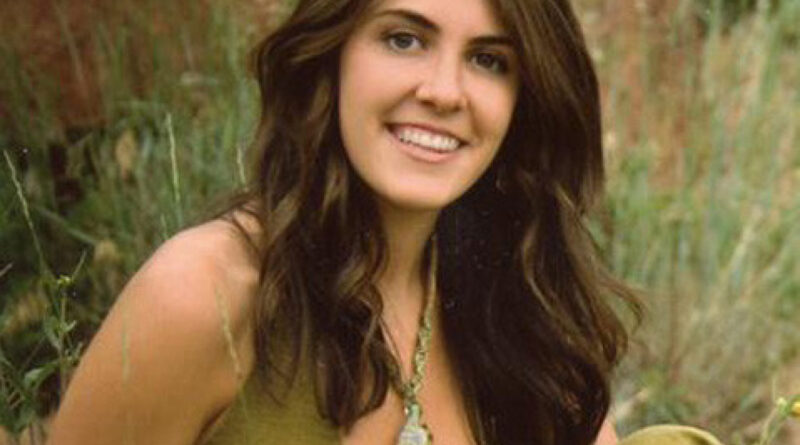Kaitlin Anne Kenney Disappearance and Death in Grand Canyon New Mexico
The story of Kaitlin Anne Kenney, a 21-year-old anthropology student from Colorado, is a heartbreaking reminder of the allure and dangers that wilderness areas can hold. On January 11, 2013, during a private rafting expedition through the Grand Canyon, Kaitlin vanished from her campsite near Tapeats Creek on the north side of the Colorado River. Her disappearance has left family, friends, and the outdoor community with more questions than answers, and despite extensive search efforts, her whereabouts remain unknown.
Kaitlin, who had a passion for anthropology and the outdoors, was thrilled to join the rafting trip, which brought together experienced adventurers eager to explore the remote and beautiful terrain of the Grand Canyon. However, this journey into one of the world’s most majestic yet unforgiving landscapes turned into a tragic mystery that continues to haunt those closest to her.
An Adventurous Spirit and a Love for Nature
Kaitlin Kenney was known by her friends and family for her joyful spirit, love for the environment, and her dedication to studying anthropology at the University of Montana. As the youngest of four siblings, she brought laughter and music into the lives of those around her. Her musical talent, particularly her skills with the fiddle, and her deep appreciation for bluegrass music reflected her zest for life and the natural world. She embraced the wild beauty of the outdoors, often hiking, camping, and seeking out experiences that connected her to nature.
The month-long private rafting trip through the Grand Canyon was a dream adventure for Kaitlin, combining her love of natural beauty and her desire to learn and explore. While it was her first time navigating the Colorado River, she was surrounded by a group of experienced rafters who had made similar journeys before. With careful planning, ample supplies, and a network of fellow adventurers, the group felt prepared for the challenges of the Grand Canyon’s rugged terrain.
The Last Night: January 11, 2013
The group’s journey progressed smoothly until the evening of January 11, when they camped near Tapeats Creek at river mile 134.5. This remote area, with its sheer canyon walls and swift-flowing waters, is a popular spot for camping but poses significant challenges, particularly at night. Kaitlin was last seen that evening at the campsite, dressed in a tan knee-length coat, rugged tan pants, a long-sleeved gray shirt, a multi-colored scarf, hiking boots, and a black knit cap—clothing suited to the chilly temperatures in the canyon.
The following morning, her companions realized Kaitlin was missing. No one had seen or heard her leave the campsite, and she left behind no obvious clues. In a panic, her group contacted the Grand Canyon dispatchers using a satellite phone, initiating an immediate response from park authorities.
The Search Begins: Ground and Air Efforts
Grand Canyon National Park’s search and rescue team quickly mobilized to search the surrounding areas. Helicopters scanned the river corridor and trails, focusing on every nook and cranny of the canyon’s formidable landscape. Ground-based teams also launched a thorough search of accessible trails, beaches, drainages, and backcountry zones near Tapeats Creek, hoping to find any sign of Kaitlin.
The search continued over two days, as rangers combed through difficult terrain. Flyers bearing Kaitlin’s photo and description were posted at river launch and takeout points, ensuring that anyone traveling through the area would know to look for her. Despite the urgency and dedication of search personnel, no new information or clues emerged to indicate her whereabouts.
Given the powerful currents of the Colorado River and the sheer drop-offs along the canyon’s edge, authorities feared that Kaitlin may have fallen into the river, where its forceful flow could carry her body far downstream. However, no evidence confirmed this theory, and her disappearance continued to baffle her family and friends.
A Family’s Unbearable Wait
For Kaitlin’s family, the news of her disappearance was devastating. Her mother, Linnea Kenney, spoke to the media, sharing her belief that Kaitlin had most likely fallen into the river. Grand Canyon officials informed her that it could take a week or longer for a body to resurface in the Colorado River’s cold and fast-moving waters. Despite the bleak outlook, Linnea found solace in memories of her daughter, describing Kaitlin as someone who “lived life to the fullest” and cherished the outdoors. She reflected on her daughter’s adventurous spirit, which kept her family grounded during the difficult wait.
The uncertainty surrounding Kaitlin’s fate compounded the family’s grief. They struggled to accept that someone so vibrant, who had brought such joy to their lives, could be gone without a trace. Linnea expressed her gratitude to park authorities for their efforts, noting that no foul play was suspected. She hoped her daughter’s memory would inspire others to pursue their passions and appreciate life’s beauty, as Kaitlin had.
March 2013: The Discovery of a Body
On March 21, more than two months after Kaitlin’s disappearance, a private river trip reported finding a woman’s body near river mile 165—about 30 miles downstream from Tapeats Creek. The following day, the body was airlifted to the canyon rim and transferred to the Coconino County Medical Examiner’s Office for identification.
A week later, officials confirmed that the body was indeed Kaitlin Kenney. This news, while offering closure to her family, also reinforced the dangers of the Colorado River and the harsh environment of the Grand Canyon. Kaitlin’s family and friends were left to mourn a life lost too soon, reflecting on the joy she had brought to those around her and the passion she had for life and the outdoors.
Due to the prolonged time her body spent in the river, it’s likely that the autopsy faced challenges in identifying the precise cause of death. Conditions such as cold water immersion can complicate a postmortem examination, and any injuries sustained from natural elements like rocks or the swift current might be hard to differentiate from potential injuries at the time of her fall. While no foul play was suspected, it’s believed that Kaitlin’s death was accidental, with hypothermia or drowning considered probable factors given the Colorado River’s powerful, icy waters and its dangerous undertows, especially in winter.
The general consensus among officials is that Kaitlin may have inadvertently slipped into the river, where the low temperatures and strong currents would have made survival nearly impossible. The Coconino County Medical Examiner’s report confirmed her identity, but without additional details, her family and friends are left with the conclusion that her death was an unfortunate accident, underscoring the inherent risks of remote wilderness exploration.
The Legacy of Kaitlin Kenney: Remembering Her Adventurous Spirit
Kaitlin’s story is a sobering reminder of the balance between natural beauty and danger in wild places like the Grand Canyon. For her family, friends, and the outdoor community, her memory remains as vivid as her spirit. Her life, though cut short, serves as a testament to the power of living with passion and purpose.
Her family has since shared their hope that Kaitlin’s story will inspire others to cherish life and pursue their own paths with the same adventurous spirit she exemplified. Kaitlin’s story underscores the need for caution and respect when exploring remote and challenging environments, where even the most experienced adventurers must remain vigilant.
The Grand Canyon, with its awe-inspiring beauty and untamed wilderness, attracts thousands of visitors each year, offering moments of discovery and wonder. Yet it also serves as a place of reflection, reminding us of the fragility of life and the mysteries that sometimes remain unresolved. For Kaitlin Kenney’s family, her story is one of profound loss but also of love, memory, and the lasting impact of a life lived with joy and boundless curiosity.
Kaitlin Anne Kenney’s story remains an indelible part of the Grand Canyon’s history, marking one of the many mysteries that lie within its depths. Her memory lives on in the hearts of those who loved her, reminding us all to embrace life fully, just as she did.
Discover more from City Towner
Subscribe to get the latest posts sent to your email.




